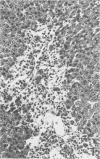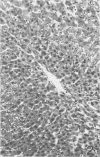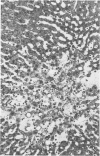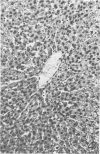Abstract
Posttreatment with diethyldithiocarbamate (DEDTC) largely prevented the development of acute hepatocellular necrosis induced by diethylnitrosamine (DEN) and dimethylnitrosamine (DMN) in male Fischer rats as monitored by the release of glutamate-pyruvate transaminase and sorbitol dehydrogenase into the serum and by histologic examination. Liver cell necrosis was evident with a dose of 25 mg of DEN/kg and was progressive with increasing doses of DEN. DEDTC (50 mg/kg; three times at 4-hour intervals) was given at 4 or 8 hours after the administration of DEN (100 mg/kg), time points at which at least 50% and 75%, respectively, of the administered DEN had disappeared from both the serum and liver. Under these conditions, DEDTC prevented liver cell necrosis, except for a few isolated cells. Similar inhibition was also observed when DEDTC was given 4 hours after the administration of a necrogenic dose of DMN (20 mg/kg). DEDTC, when administered 4 hours after DEN, delayed the rate of clearance of DEN and of ethylation of DNA and RNA but did not significantly affect the total extent of ethylation of rat liver nucleic acids. These results offer further support for the multistep hypothesis for the development of liver cell necrosis.
Full text
PDF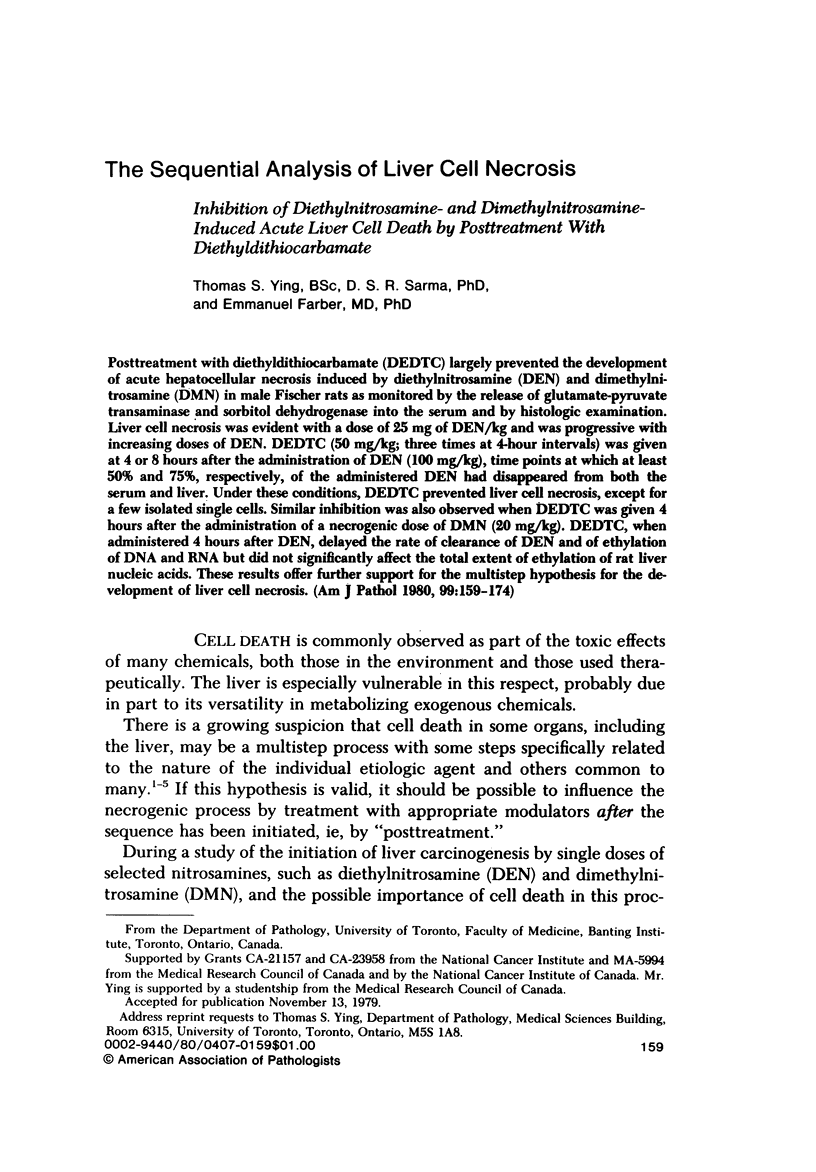
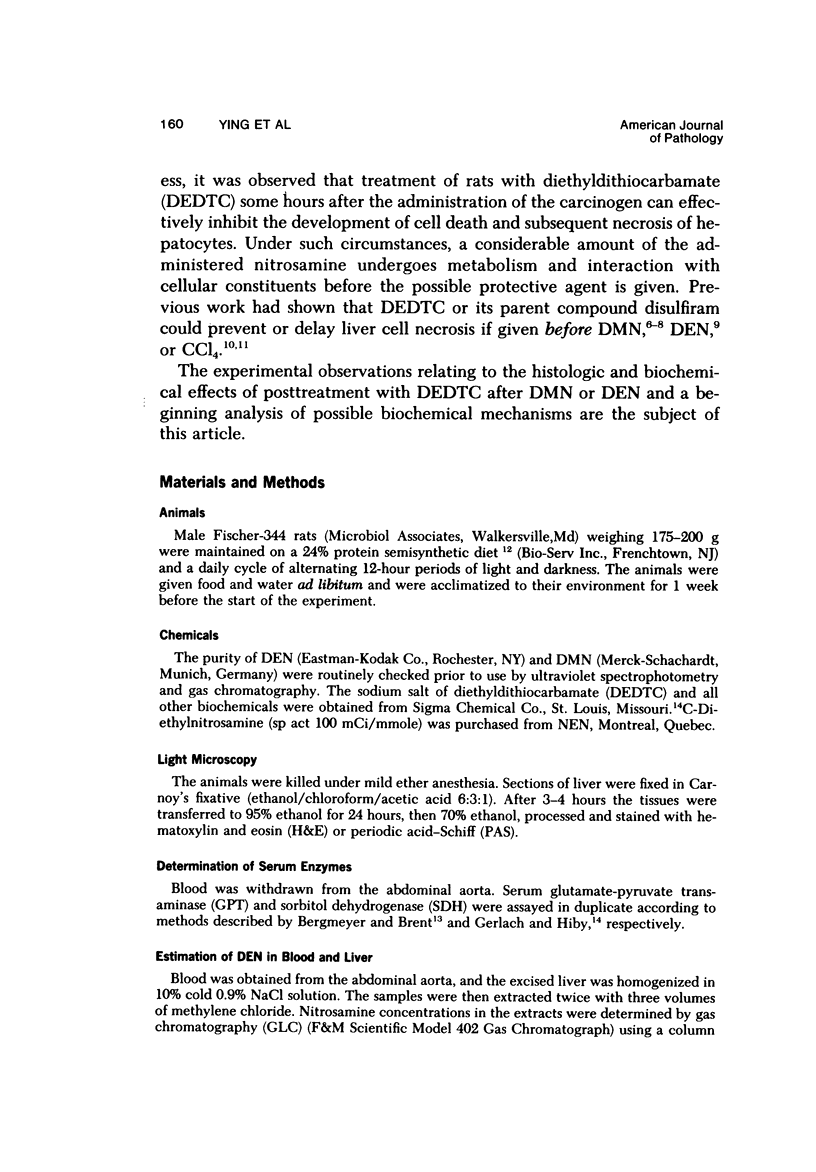
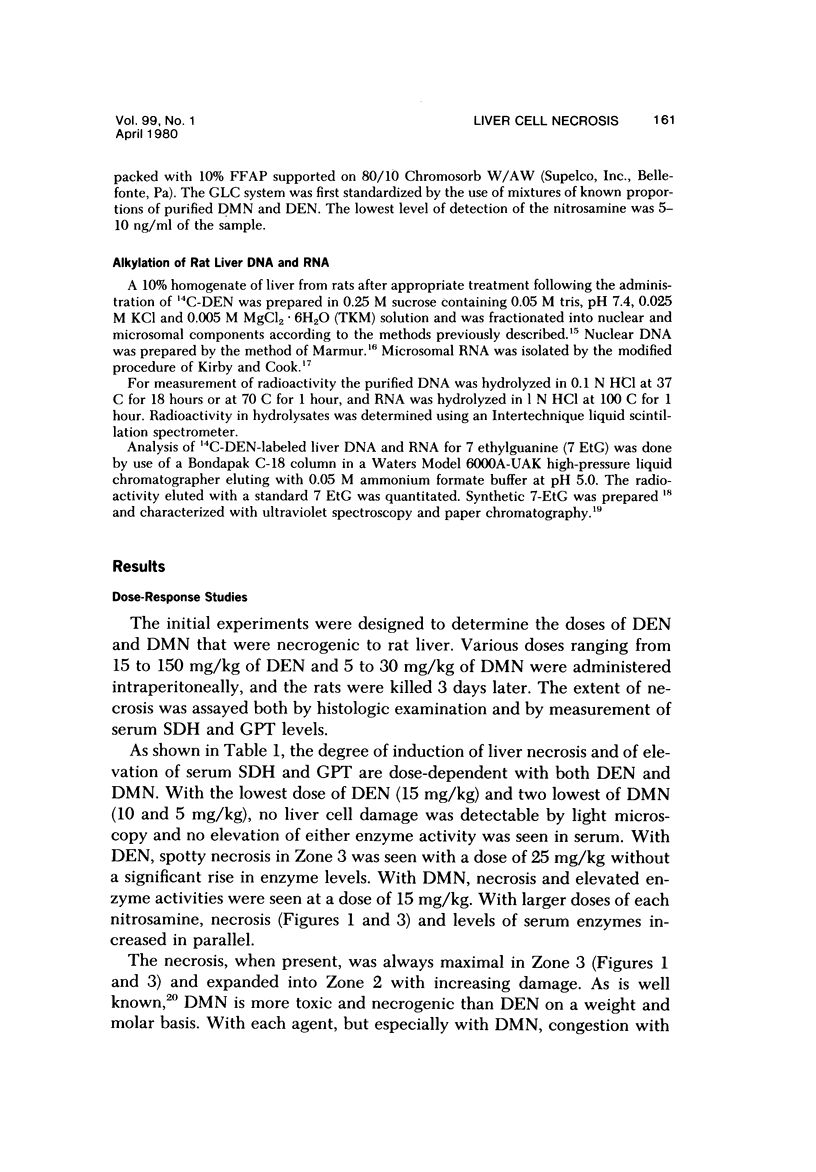
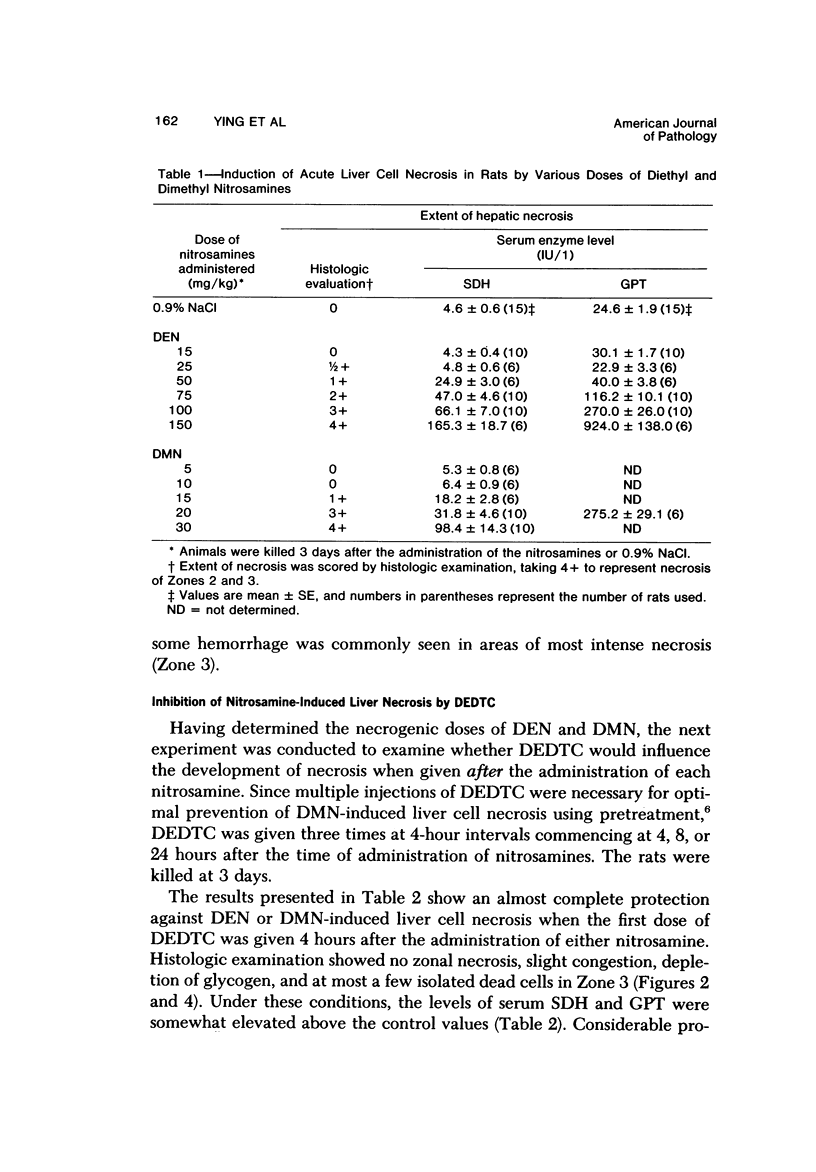
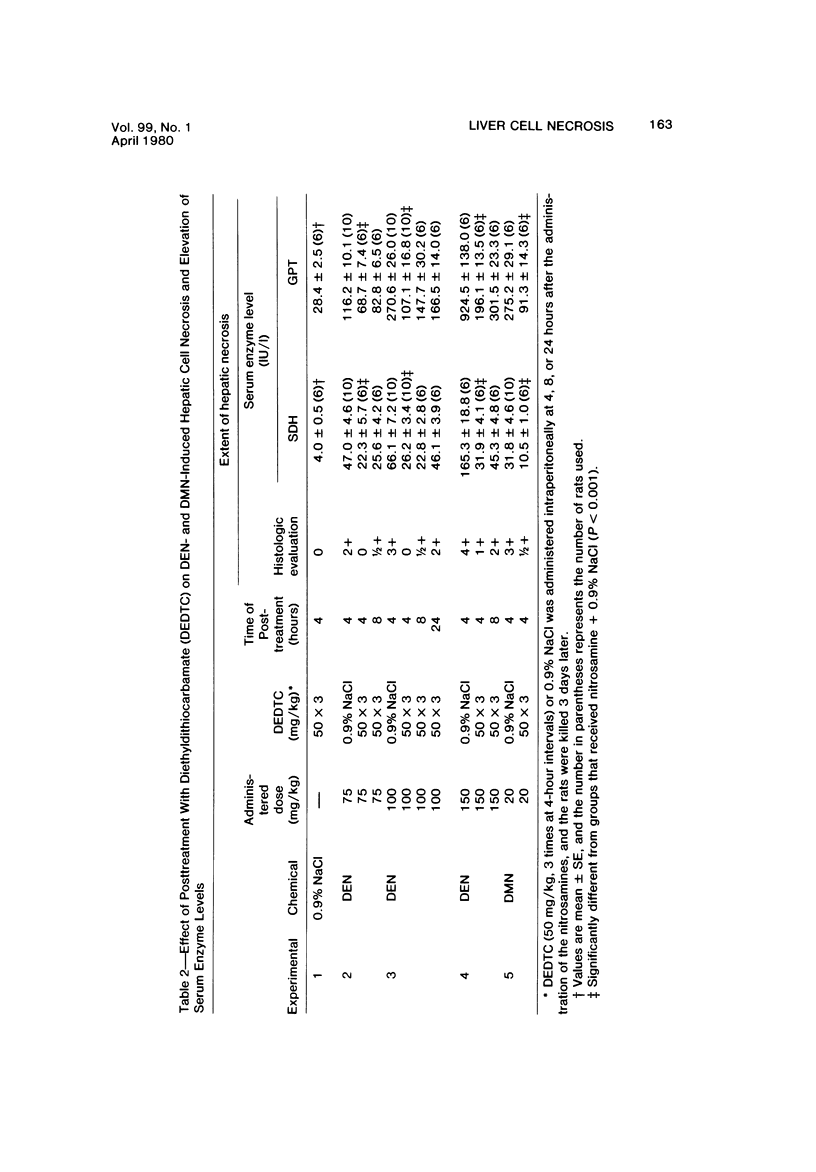
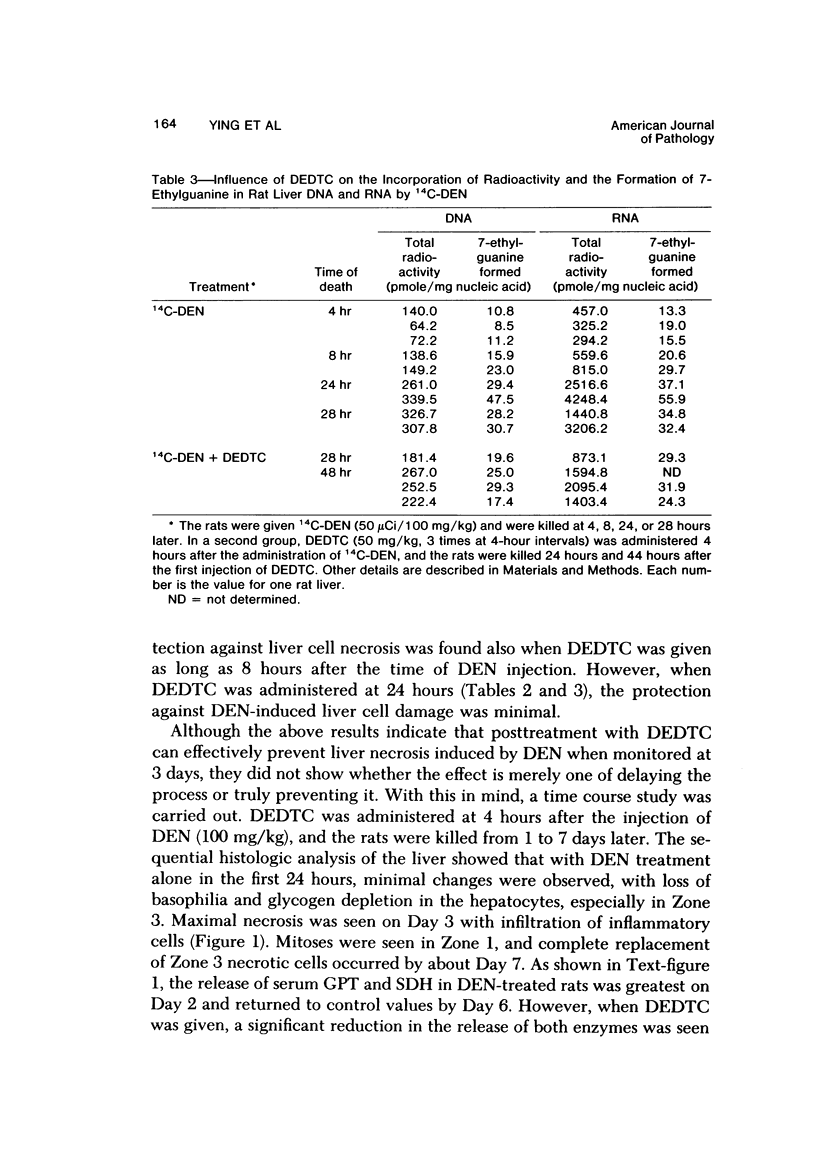
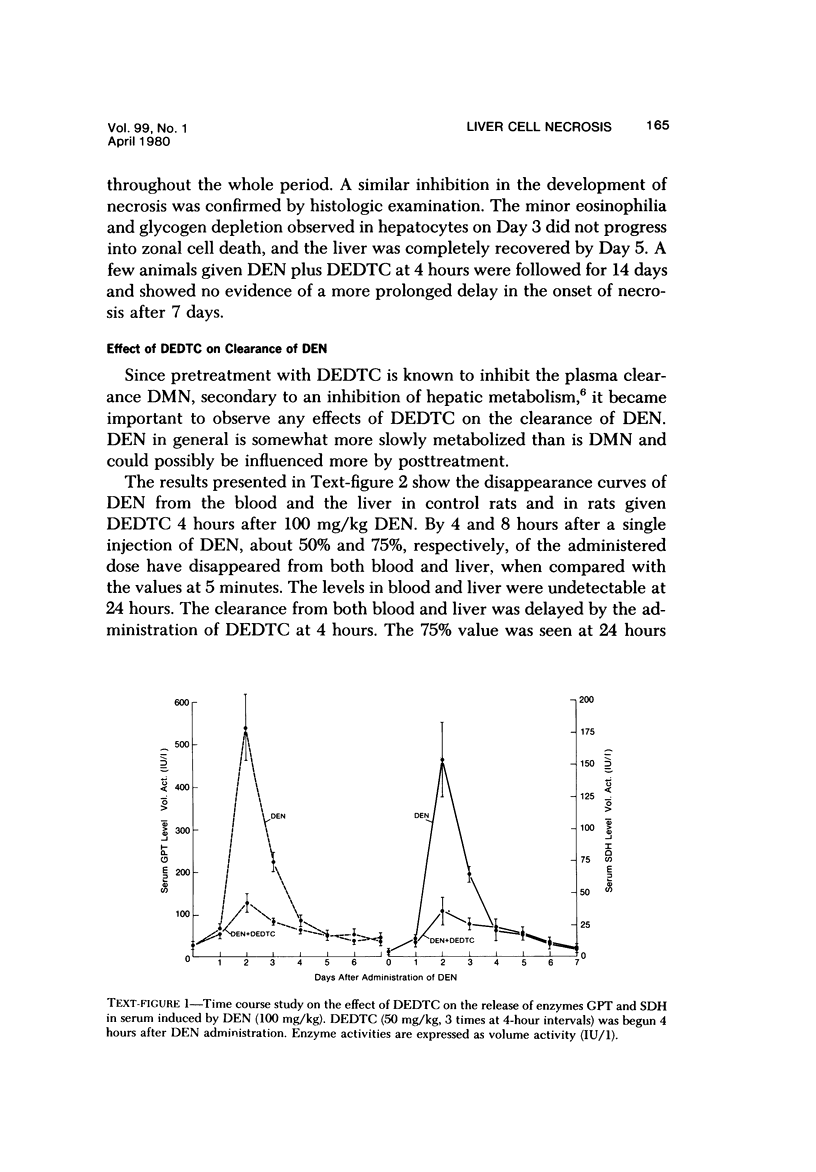
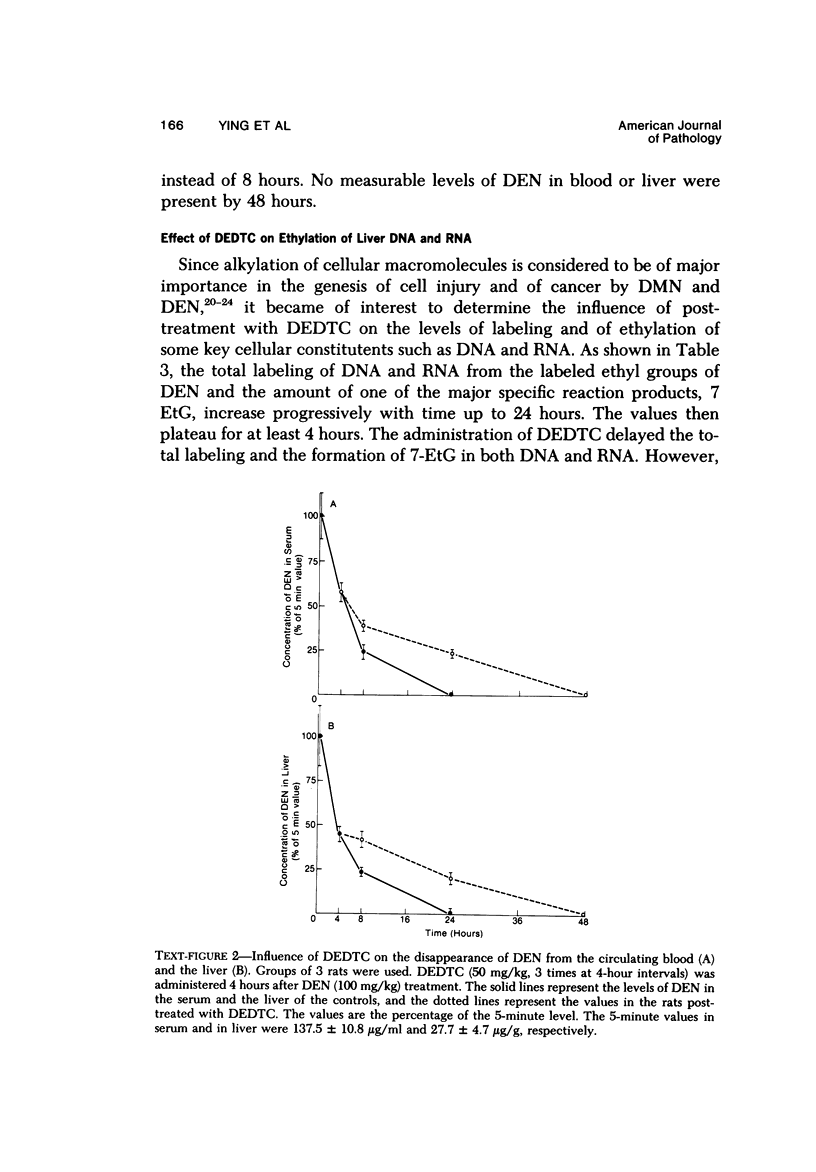
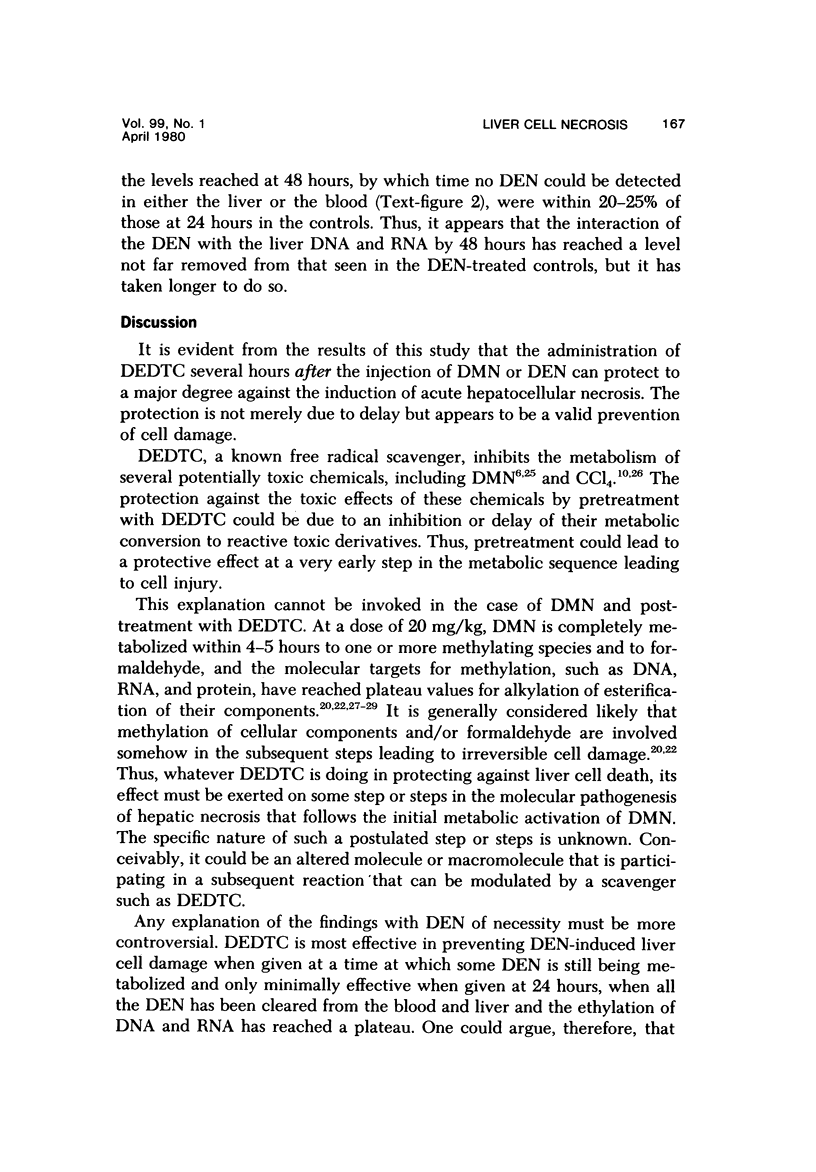
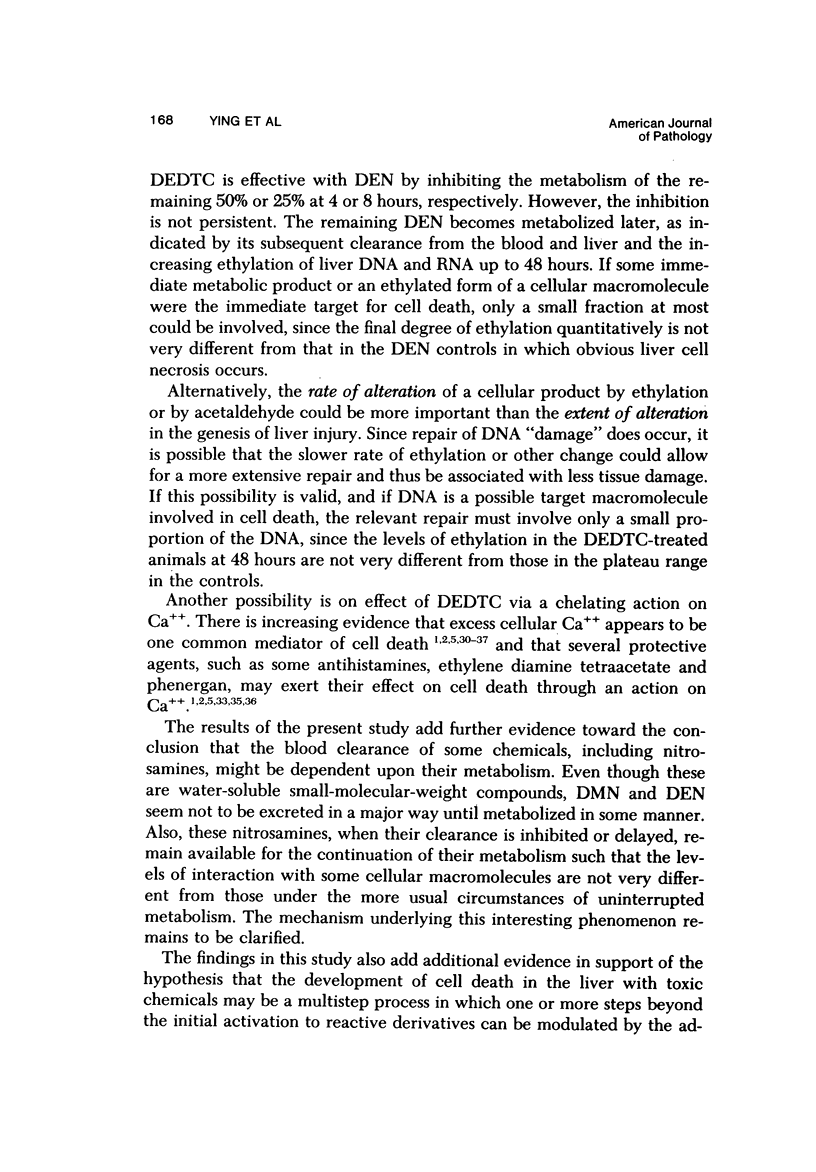
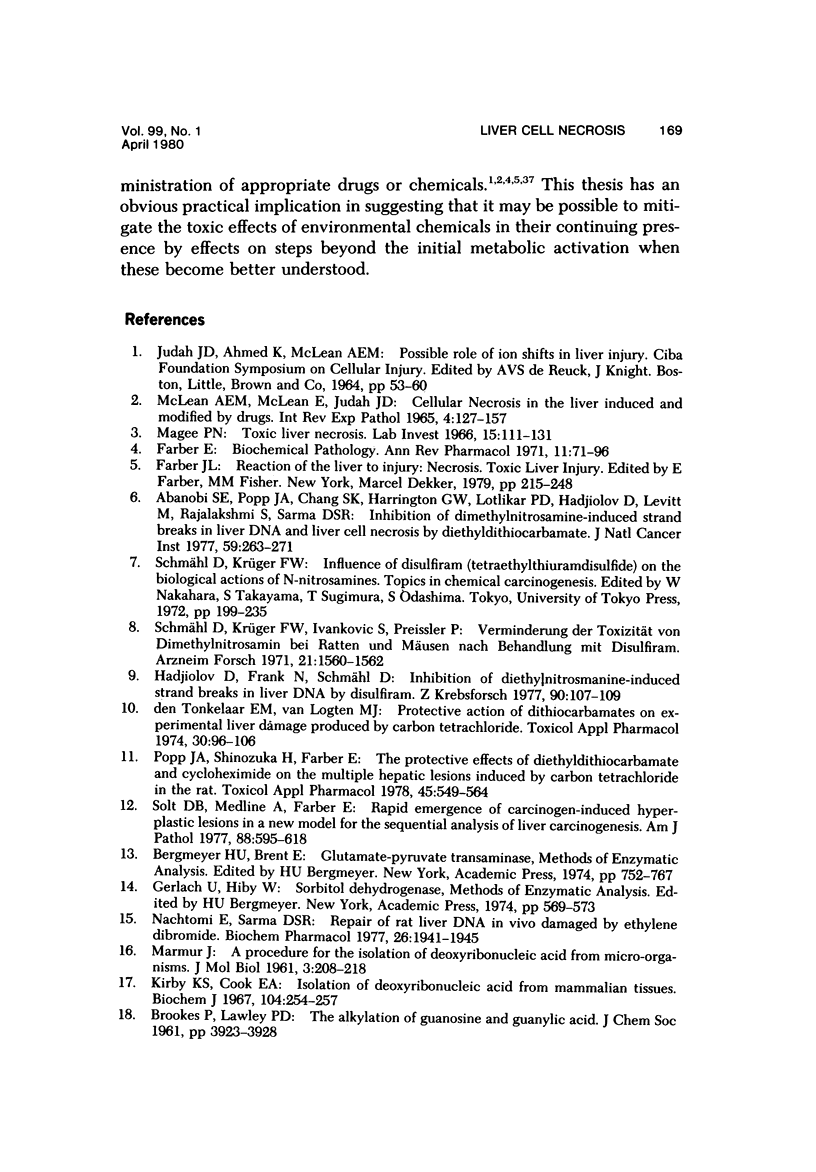
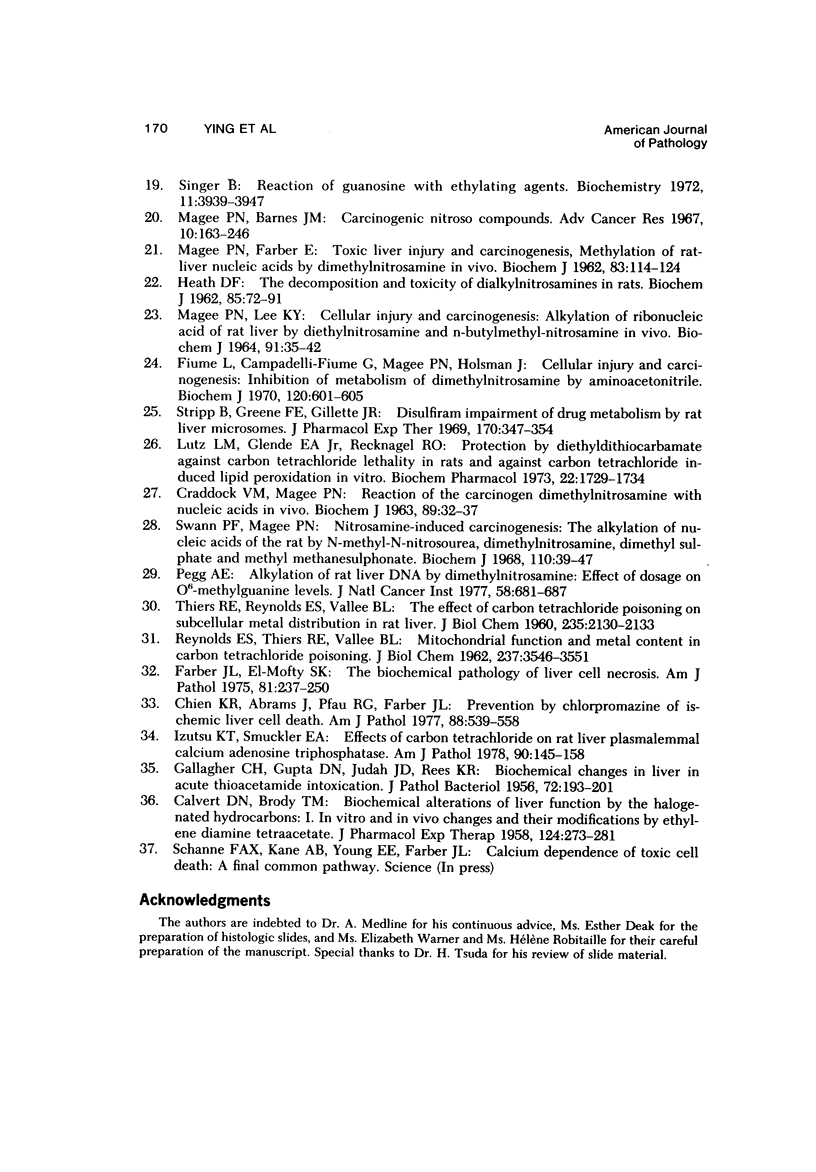
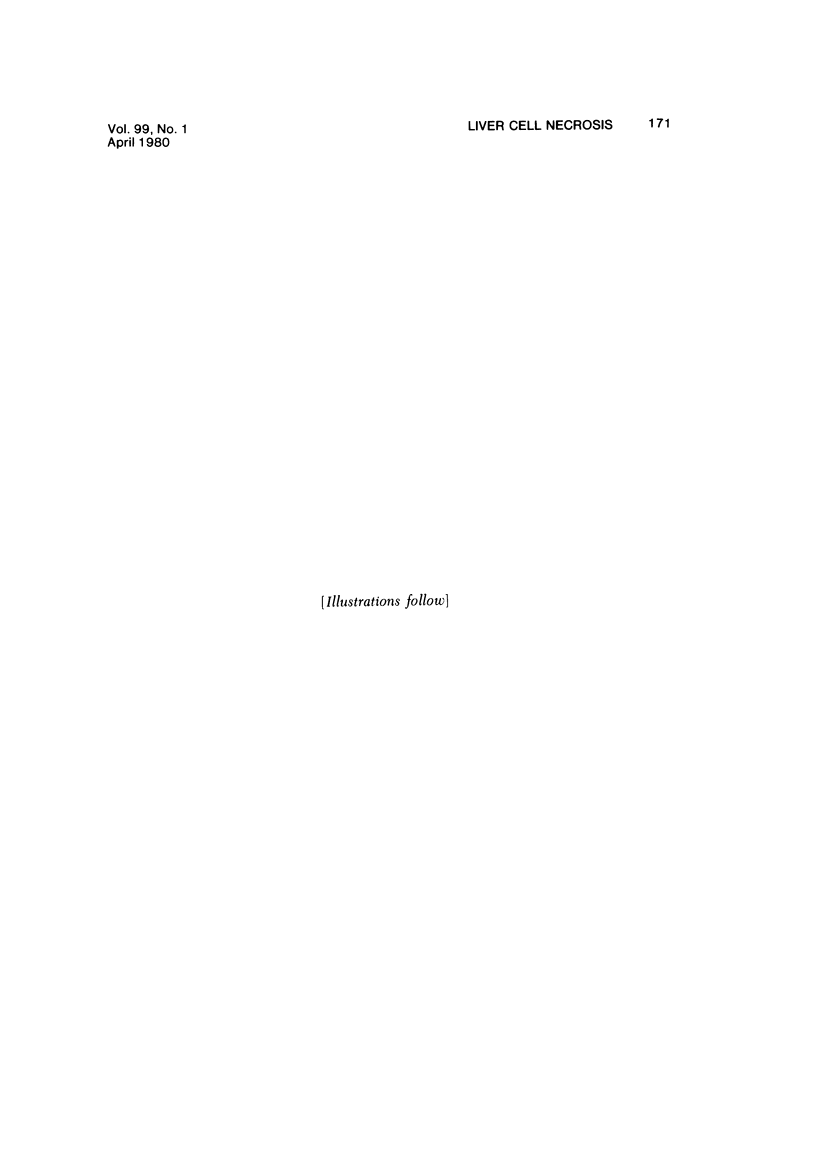
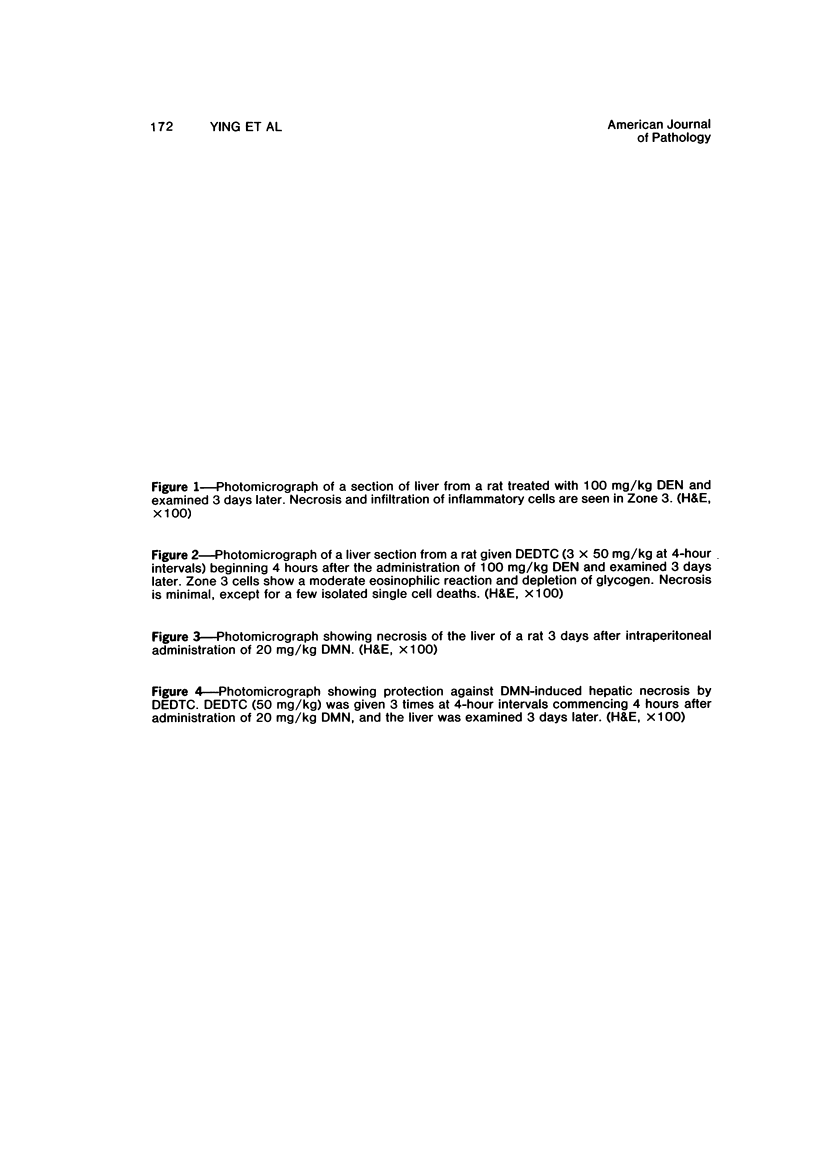
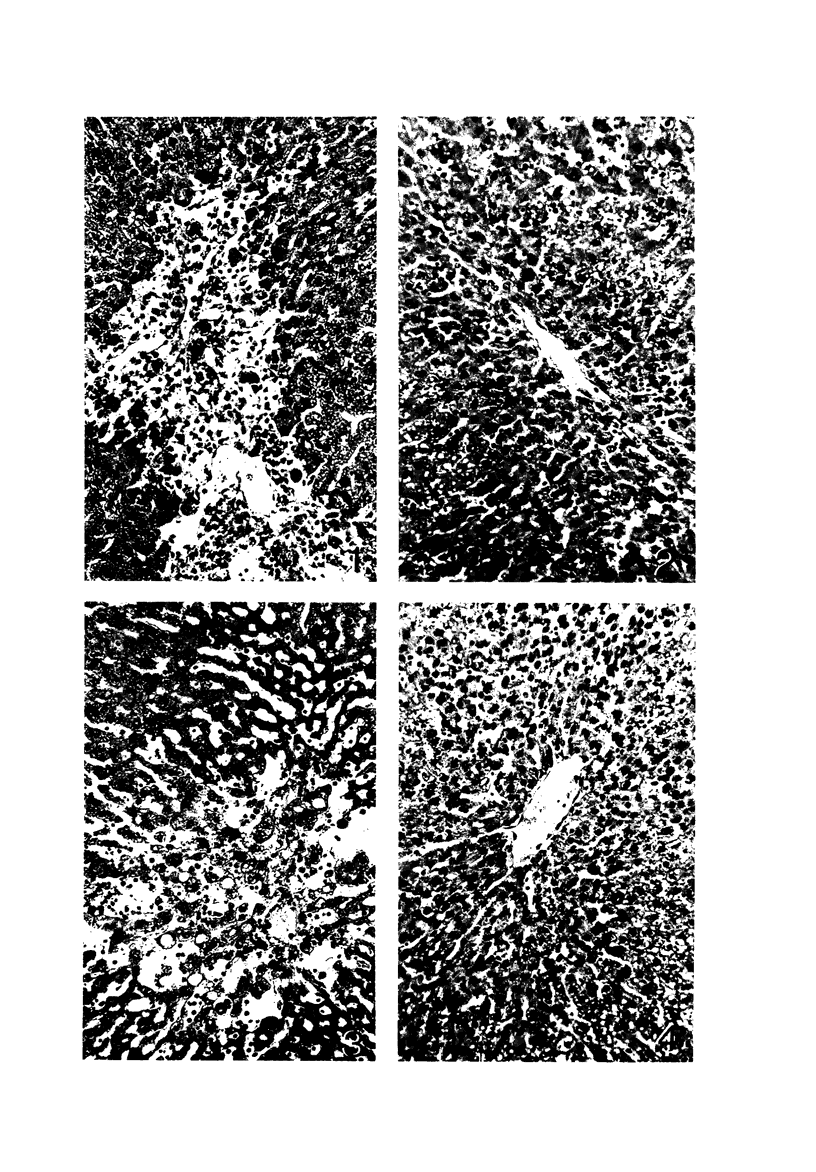
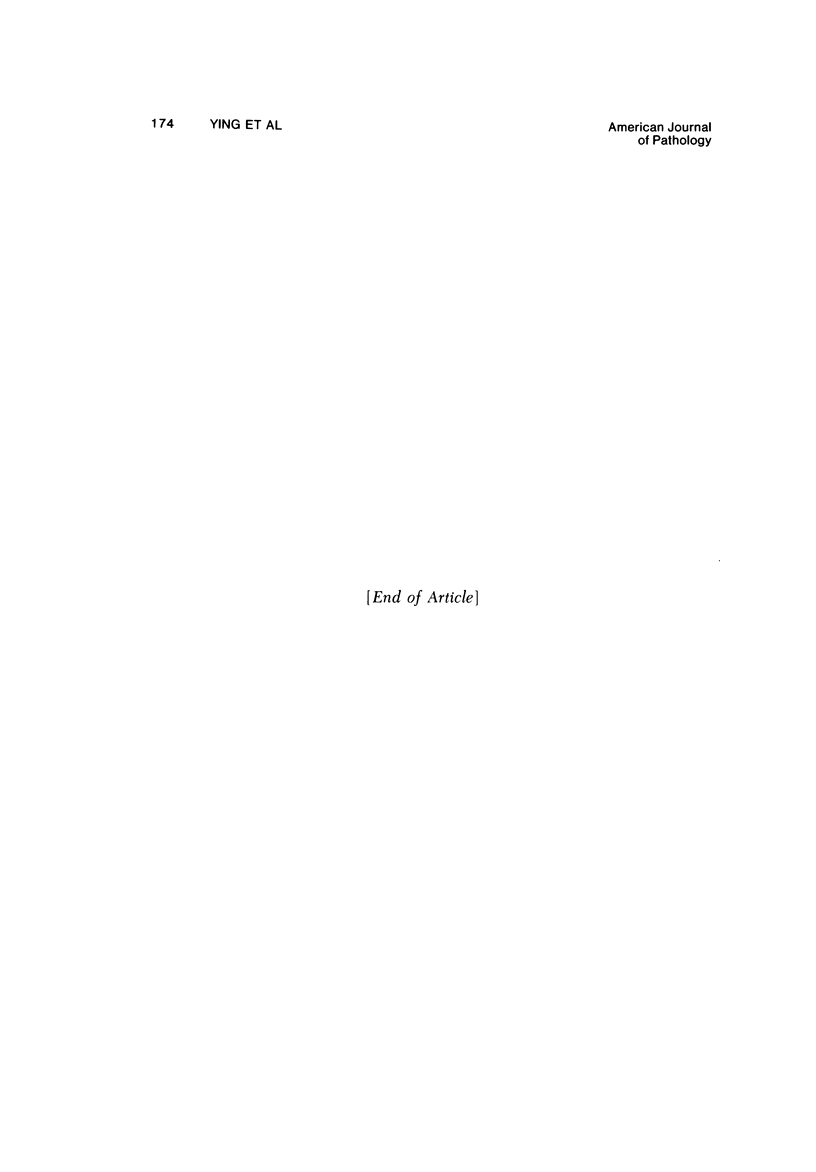
Images in this article
Selected References
These references are in PubMed. This may not be the complete list of references from this article.
- Abanobi S. E., Popp J. A., Chang S. K., Harrington G. W., Lotlikar P. D., Hadjiolov D., Levitt M., Rajalakshmi S., Sarma D. S. Inhibition of dimethylnitrosamine-induced strand breaks in liver DNA and liver cell necrosis by diethyldithiocarbamate. J Natl Cancer Inst. 1977 Feb;58(2):263–271. doi: 10.1093/jnci/58.2.263. [DOI] [PubMed] [Google Scholar]
- CALVERT D. N., BRODY T. M. Biochemical alterations of liver function by the halogenated hydrocarbons. I. In vitro and in vivo changes and their modification by ethylenediamine tetraacetate. J Pharmacol Exp Ther. 1958 Dec;124(4):273–281. [PubMed] [Google Scholar]
- CRADDOCK V. M., MAGEE P. N. REACTION OF THE CARCINOGEN DIMETHYLNITROSAMINE WITH NUCLEIC ACIDS IN VIVO. Biochem J. 1963 Oct;89:32–37. doi: 10.1042/bj0890032. [DOI] [PMC free article] [PubMed] [Google Scholar]
- Chien K. R., Abrams J., Pfau R. G., Farber J. L. Prevention by chlorpromazine of ischemic liver cell death. Am J Pathol. 1977 Sep;88(3):539–557. [PMC free article] [PubMed] [Google Scholar]
- Farber E. Biochemical pathology. Annu Rev Pharmacol. 1971;11:71–96. doi: 10.1146/annurev.pa.11.040171.000443. [DOI] [PubMed] [Google Scholar]
- Farber J. L., El-Mofty S. K. The biochemical pathology of liver cell necrosis. Am J Pathol. 1975 Oct;81(1):237–250. [PMC free article] [PubMed] [Google Scholar]
- Fiume L., Campadelli-Fiume G., Magee P. N., Holsman J. Cellular injury and carcinogenesis. Inhibition of metabolism of dimethylnitrosamine by aminoacetonitrile. Biochem J. 1970 Dec;120(3):601–605. doi: 10.1042/bj1200601. [DOI] [PMC free article] [PubMed] [Google Scholar]
- GALLAGHER C. H., GUPTA D. N., JUDAH J. D., REES K. R. Biochemical changes in liver in acute thioacetamide intoxication. J Pathol Bacteriol. 1956 Jul;72(1):193–201. doi: 10.1002/path.1700720125. [DOI] [PubMed] [Google Scholar]
- Hadjiolov D., Frank N., Schmähl D. Inhibition of diethylnitrosamine-induced strand breaks in liver DNA by disulfiram. Z Krebsforsch Klin Onkol Cancer Res Clin Oncol. 1977 Oct;90(1):107–109. doi: 10.1007/BF00306025. [DOI] [PubMed] [Google Scholar]
- Heath D. F. The decomposition and toxicity of dialkylnitrosamines in rats. Biochem J. 1962 Oct;85(1):72–91. doi: 10.1042/bj0850072. [DOI] [PMC free article] [PubMed] [Google Scholar]
- Izutsu K. T., Smuckler E. A. Effects of carbon tetrachloride on rat liver plasmalemmal calcium adenosine triphosphatase. Am J Pathol. 1978 Jan;90(1):145–158. [PMC free article] [PubMed] [Google Scholar]
- Kirby K. S., Cook E. A. Isolation of deoxyribonucleic acid from mammalian tissues. Biochem J. 1967 Jul;104(1):254–257. doi: 10.1042/bj1040254. [DOI] [PMC free article] [PubMed] [Google Scholar]
- Lutz L. M., Glende E. A., Jr, Recknagel R. O. Protection by diethyldithiocarbamate against carbon tetrachloride lethality in rats and against carbon tetrachloride-induced lipid peroxidation in vitro. Biochem Pharmacol. 1973 Jul 15;22(14):1729–1734. doi: 10.1016/0006-2952(73)90386-9. [DOI] [PubMed] [Google Scholar]
- MAGEE P. N., FARBER E. Toxic liver injury and carcinogenesis. Methylation of rat-liver nucleic acids by dimethylnitrosamine in vivo. Biochem J. 1962 Apr;83:114–124. doi: 10.1042/bj0830114. [DOI] [PMC free article] [PubMed] [Google Scholar]
- Magee P. N., Barnes J. M. Carcinogenic nitroso compounds. Adv Cancer Res. 1967;10:163–246. doi: 10.1016/s0065-230x(08)60079-2. [DOI] [PubMed] [Google Scholar]
- Magee P. N., Lee K. Y. Cellular injury and carcinogenesis. Alkylation of ribonucleic acid of rat liver by diethylnitrosamine and n-butylmethylnitrosamine in vivo. Biochem J. 1964 Apr;91(1):35–42. doi: 10.1042/bj0910035. [DOI] [PMC free article] [PubMed] [Google Scholar]
- Magee P. N. Toxic liver necrosis. Lab Invest. 1966 Jan;15(1 Pt 1):111–131. [PubMed] [Google Scholar]
- McLean A. E., McLean E., Judah J. D. Cellular necrosis in the liver induced and modified by drugs. Int Rev Exp Pathol. 1965;4:127–157. [PubMed] [Google Scholar]
- Nachtomi E., Sarma D. S. Repair of rat liver DNA in vivo damaged by ethylene dibromide. Biochem Pharmacol. 1977 Oct 15;26(20):1941–1945. doi: 10.1016/0006-2952(77)90170-8. [DOI] [PubMed] [Google Scholar]
- Pegg A. E. Alkylation of rat liver DNA by dimethylnitrosamine: effect of dosage on O6-methylguanine levels. J Natl Cancer Inst. 1977 Mar;58(3):681–687. doi: 10.1093/jnci/58.3.681. [DOI] [PubMed] [Google Scholar]
- Popp J. A., Shinozuka H., Farber E. The protective effects of diethyldithiocarbamate and cycloheximide on the multiple hepatic lesions induced by carbon tetrachloride in the rat. Toxicol Appl Pharmacol. 1978 Aug;45(2):549–564. doi: 10.1016/0041-008x(78)90117-5. [DOI] [PubMed] [Google Scholar]
- REYNOLDS E. S., THIERS R. E., VALLEE B. L. Mitochondrial function and metal content in carbon tetrachloride poisoning. J Biol Chem. 1962 Nov;237:3546–3551. [PubMed] [Google Scholar]
- Schmähl D., Krüger F. W., Ivankovic S., Preissler P. Vermindung der Toxizität von Dimethylnitrosamin bei Ratten und Mäusen nach Behandlung mit Disulfiram. Arzneimittelforschung. 1971 Oct;21(10):1560–1562. [PubMed] [Google Scholar]
- Singer B. Reaction of guanosine with ethylating agents. Biochemistry. 1972 Oct 10;11(21):3939–3947. doi: 10.1021/bi00771a017. [DOI] [PubMed] [Google Scholar]
- Solt D. B., Medline A., Farber E. Rapid emergence of carcinogen-induced hyperplastic lesions in a new model for the sequential analysis of liver carcinogenesis. Am J Pathol. 1977 Sep;88(3):595–618. [PMC free article] [PubMed] [Google Scholar]
- Stripp B., Greene F. E., Gillette J. R. Disulfiram impairment of drug metabolism by rat liver microsomes. J Pharmacol Exp Ther. 1969 Dec;170(2):347–354. [PubMed] [Google Scholar]
- Swann P. F., Magee P. N. Nitrosamine-induced carcinogenesis. The alklylation of nucleic acids of the rat by N-methyl-N-nitrosourea, dimethylnitrosamine, dimethyl sulphate and methyl methanesulphonate. Biochem J. 1968 Nov;110(1):39–47. doi: 10.1042/bj1100039. [DOI] [PMC free article] [PubMed] [Google Scholar]
- THIERS R. E., REYNOLDS E. S., VALLEE B. L. The effect of carbon tetrachloride poisoning on subcellular metal distribution in rat liver. J Biol Chem. 1960 Jul;235:2130–2133. [PubMed] [Google Scholar]



